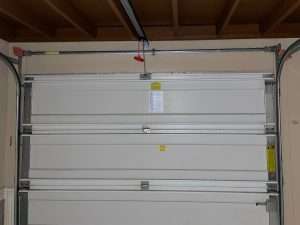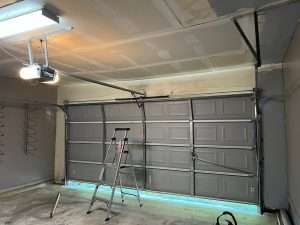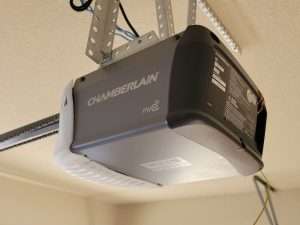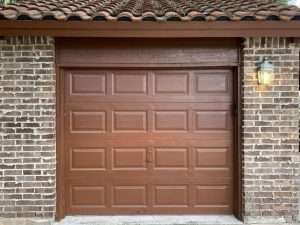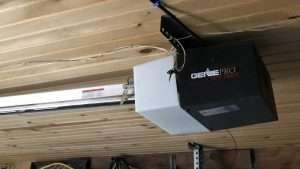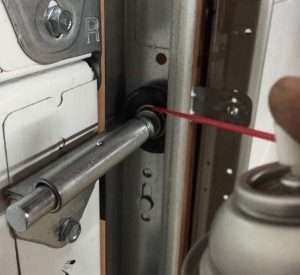Garage Door Opener Outlet Location and Requirements
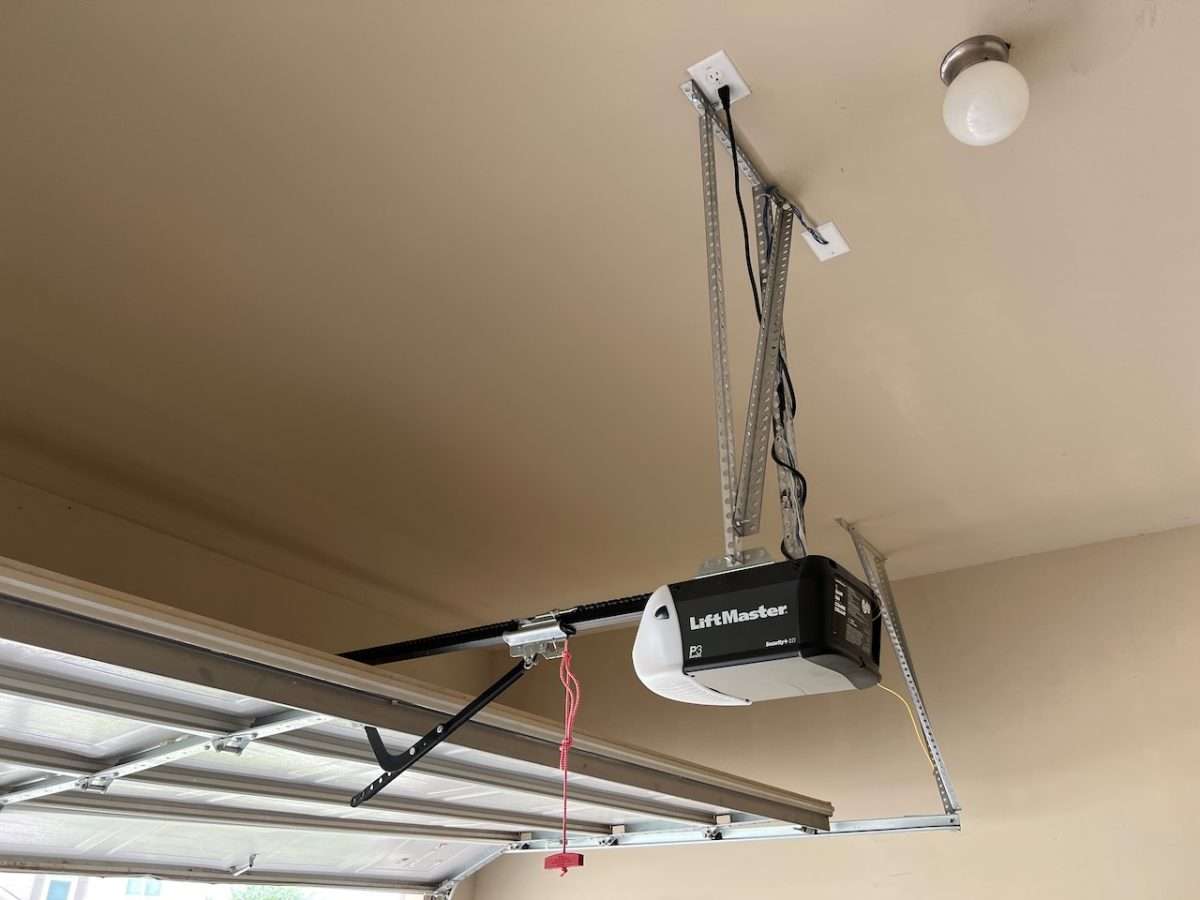
Whether you’re building a new home or moving into an existing home, having the proper electrical outlet and prewire in the ceiling for an automatic opener is important. While there once was a time when people opened their garage doors manually, today most homeowners rely on the push of a button to access their garage.
This article will cover the ceiling outlet and prewire locations for a garage door opener, along with the power requirements. We have thrown in some extra tips that we feel may be useful when building a home or installing your garage door opener.
What are the Power Requirements for a Garage Door Opener?
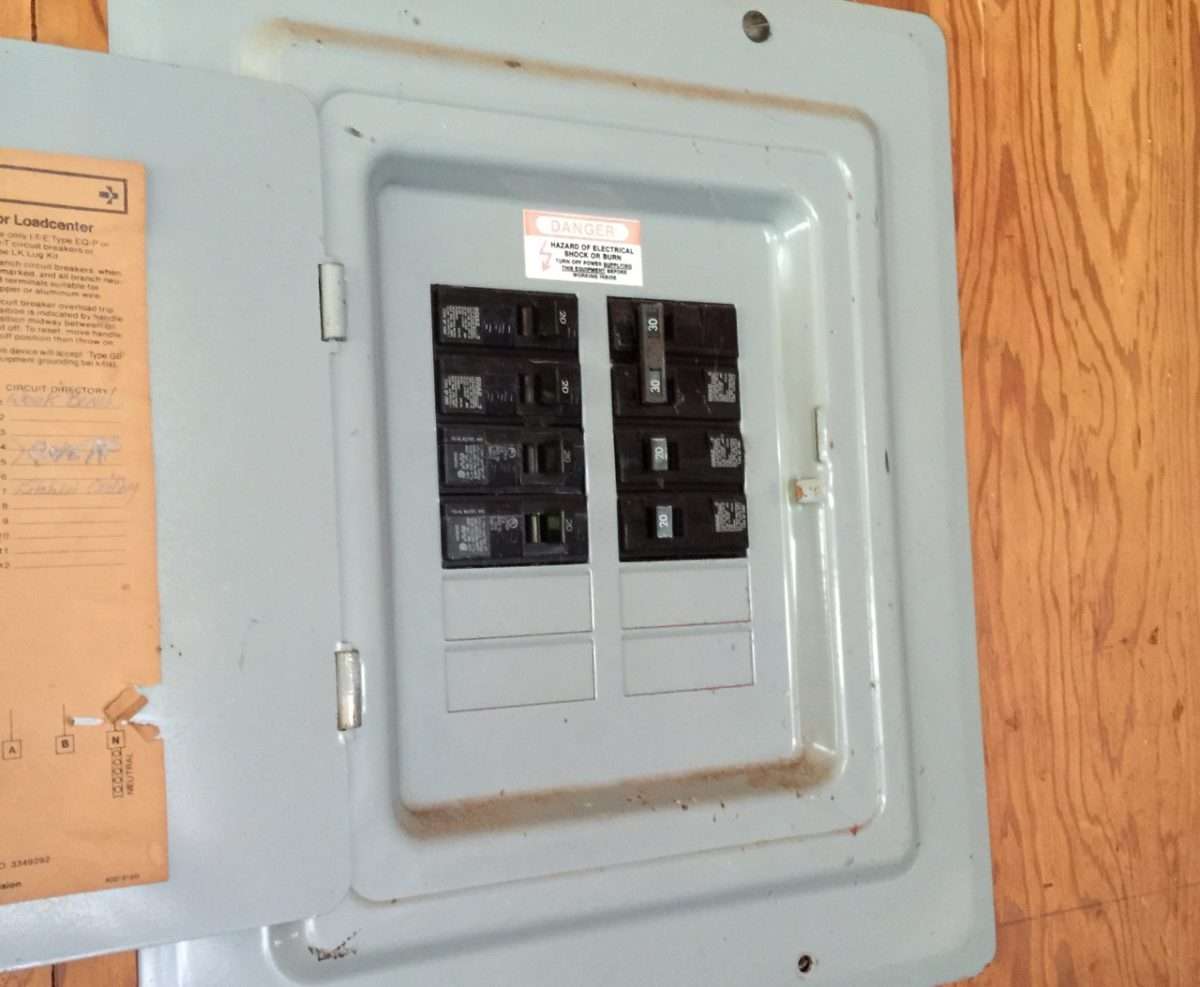
A standard residential garage door opener requires a 120V outlet in the ceiling running off a 20 amp breaker. Many older homes are probably still running 15 amp breakers, but most newer codes require a 20 amp breaker, which will handle 2–3 openers on the same circuit without any issues.
The only time you would be close to maxing out a 20 amp circuit is if all three garage door openers were running at the same time. This would be extremely rare, and in any case, a 20 amp circuit will handle it just fine. A 15 amp circuit might be cutting it close.
How Many Amps Does a Garage Door Opener Draw?
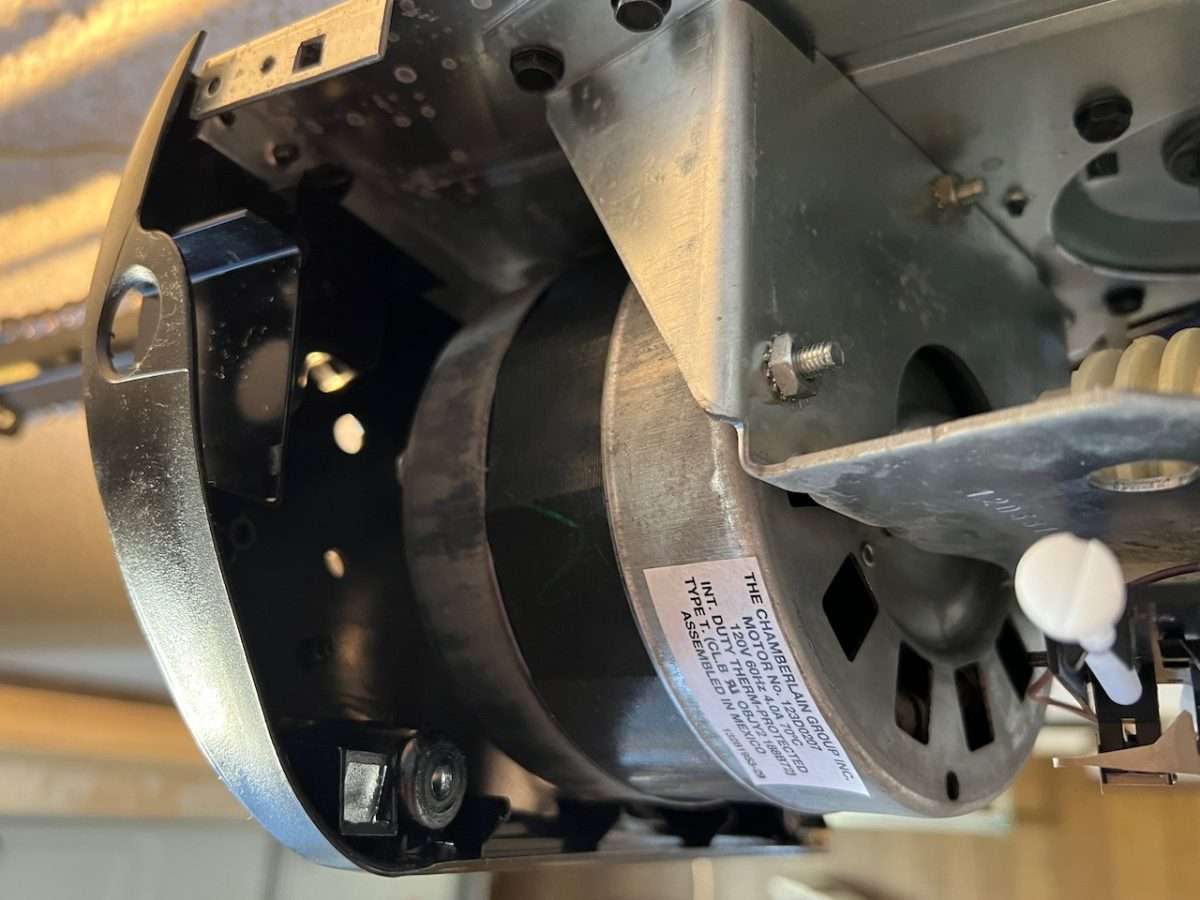
Most automatic garage door openers are going to draw anywhere from 3 to 6 amps of power while running. This load can spike upon initial startup when you first activate your garage door opener.
Older garage door openers with AC motors will draw way more amperage than newer openers that feature DC motors. Most garage door opener brands are moving to DC motors like what you will find in the LiftMaster 81600. Openers with DC motors are much quieter, and they feature soft start/stop, which removes the abrupt take-off upon initial start.
One thing to keep in mind as well is the lights bulbs you are using. Older incandescent bulbs will draw far more power than newer LED bulbs. While LED bulbs are great, they have been known to cause remote interference.
How Long is a Garage Door Opener?
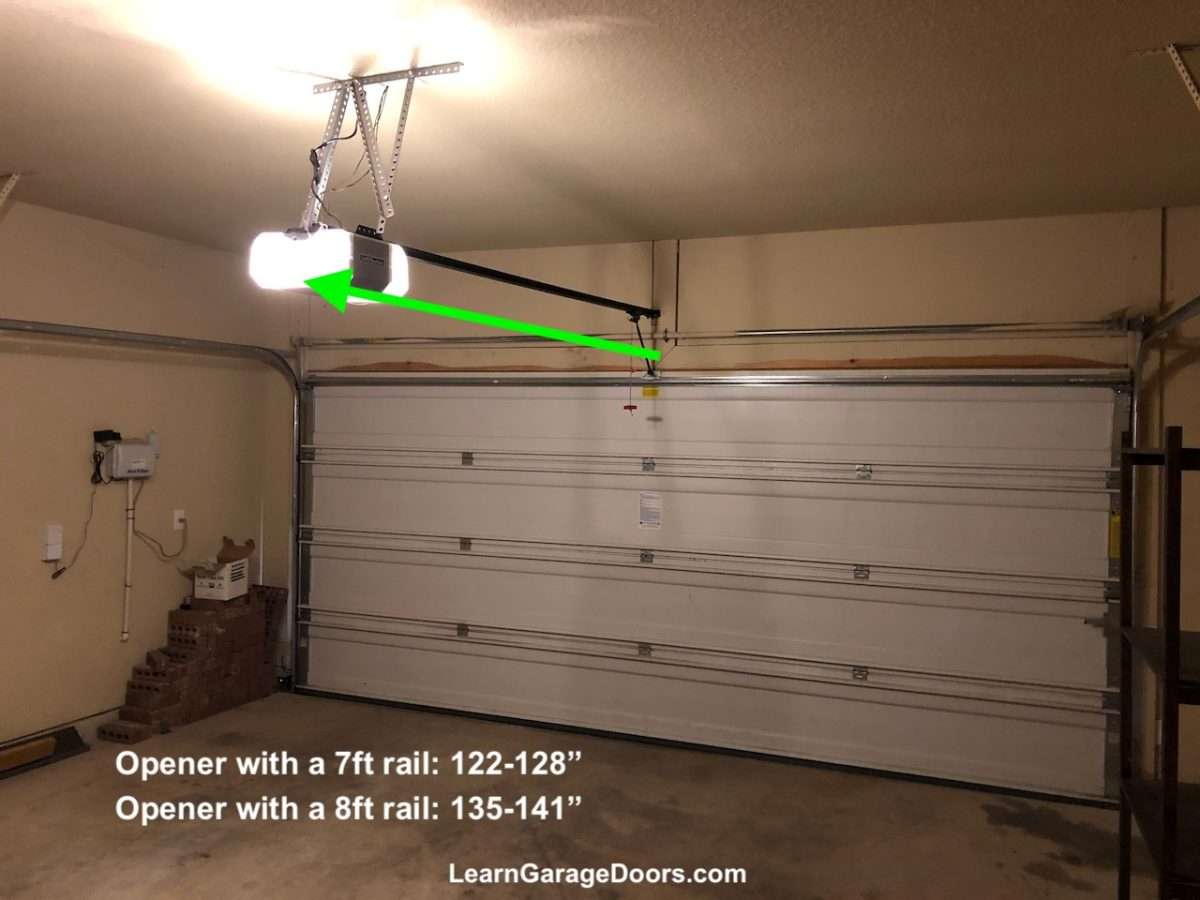
Opener with a 7ft rail: 122-128”
Opener with a 8ft rail: 135-141”
On average, a garage door opener with a 7ft rail will have an overall length of 124 inches. An opener with a 8ft rail will have an average length of around 138 inches.
Garage door openers with the 7ft designation are designed to be installed on a garage door that is 7ft tall. Openers with the 8ft designation are designed to be installed on a garage door that is 8ft tall.
The full length of a garage door opener is going to vary depending on the make and model of the unit. Openers with a single light will typically be shorter, while dual light units will have a longer overall length.
Outlet Location for a Standard Trolley Garage Door Opener?
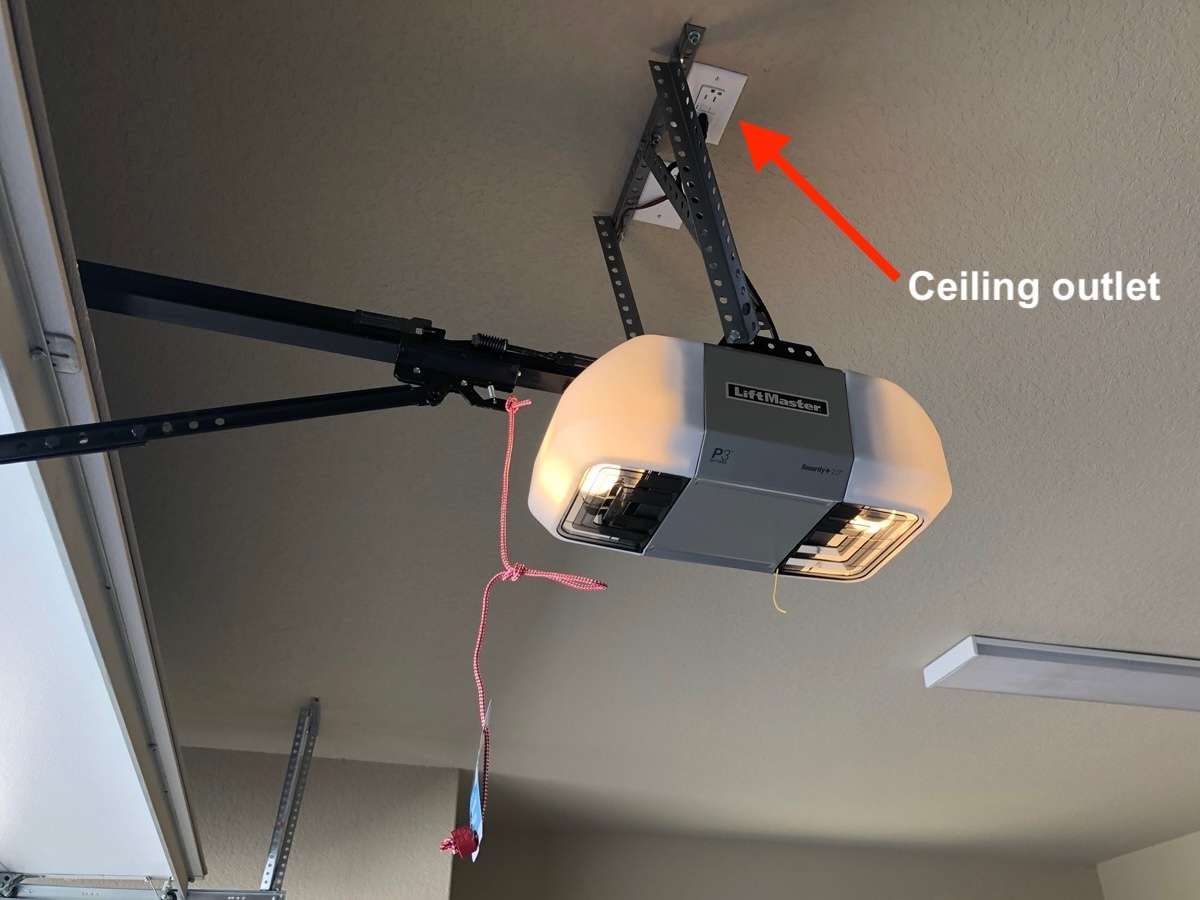
The standard location for an opener ceiling outlet on a 7ft tall garage door is about 10ft back from the center of the garage door. If your garage door is 8ft tall, you’re going to want the outlet installed 11ft back from the garage door in the center.
Prewire Locations for Opener Safety Sensors and Wall Control
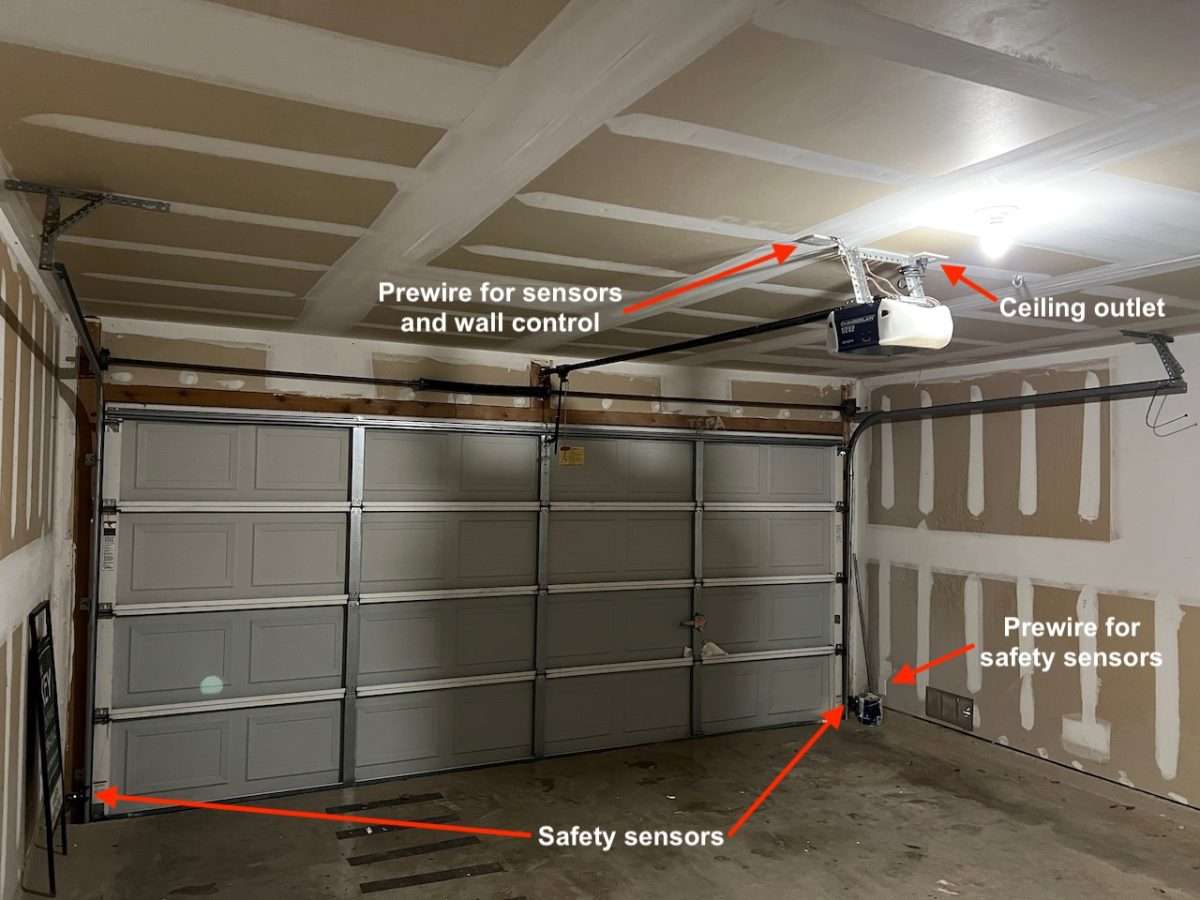
The low voltage prewire for the wall control and safety sensors is usually installed by electricians when a new home is built. If your home doesn’t have prewire running in your walls, it will be stapled to the sheetrock when you have a new opener installed by a garage door company.
New garage door openers will come with wire in the box you can use if you intend to do your installation. Most manufacturers will include around 35ft of wiring for the safety sensors and 25ft of wiring for the wall control. Remember, safety sensors are supposed to be mounted no higher than 6 inches off the ground.
If you’re sourcing your wiring for the prewire on your garage door opener, try to find at least 22 gauge wire or larger. We have seen smaller wire like CAT5 networking or telephone wire used as prewire, and it has a tendency to break easily. It is also hard to work with because it nicks easily, which can cause unnecessary repeat service calls.
Outlet Location for a Wall Mount Garage Door Opener
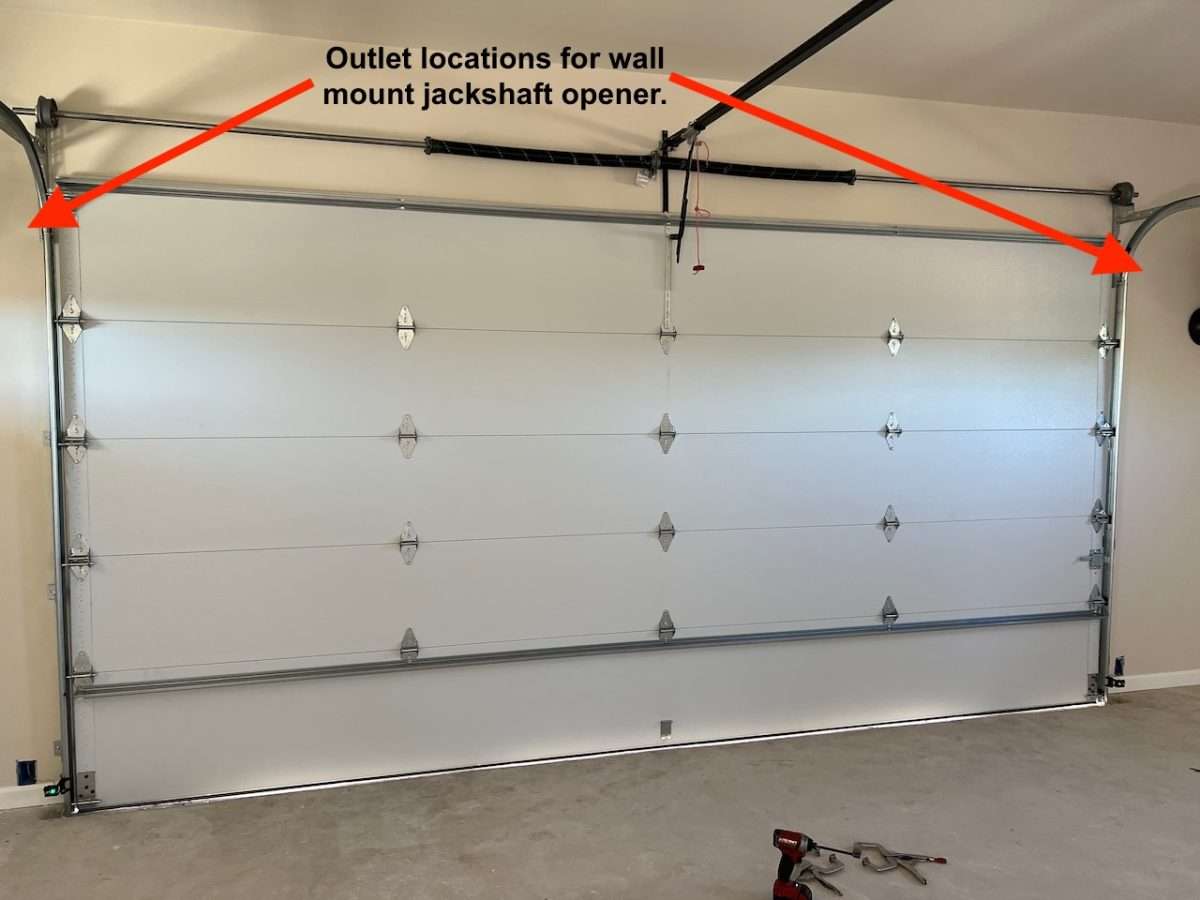
Wall mount jackshaft garage door openers like the LiftMaster 8500W will be installed on the outside of the garage door tracks. These are direct drive openers that are attached to the torsion spring shaft.
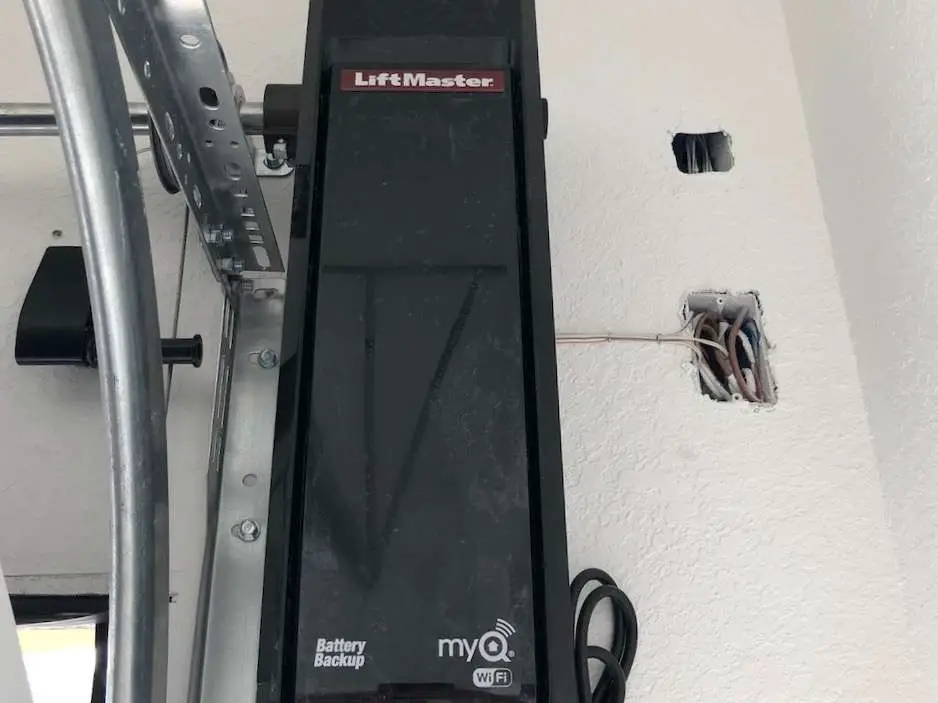
Depending on the side of the garage door you choose to install on, you will need a power outlet and low voltage prewire for the wall control and safety sensor wires. You can decide to have these installed about 2ft below the torsion shaft or right above it on the side wall, so they are within reach of the opener.
You can also have them installed to the left or right of the unit if you prefer. Either way, it’s best to know the dimensions of your wall mount opener, so the outlet doesn’t end up right behind the unit, making it hard to plug it in.
Builders Run Ceiling Outlets Off GFCI in Garage

Most ceiling outlets for garage door openers installed in recent years are wired off a GFCI outlet somewhere in the garage. This is usually on the front wall that you stare at while pulling your vehicle into the garage.
If the Motörhead and wall control lights are not on and the garage door opener doesn’t have power, try looking for a GFCI outlet in the garage to reset. Most likely, this will resolve your issue, as it is one of the most common phone calls we receive.
If you have a refrigerator or freezer plugged into the GFCI outlet, and it keeps tripping, you might want to consider moving that appliance to a different outlet in the garage. In almost every scenario we come across, there is either a fridge or freezer that is causing issues with the GFCI outlet.
Should a Garage Door Opener Be On Its Own Circuit?
A garage door opener is not required to be on its own circuit in most areas. In fact, most garage door openers are powered off a GFCI outlet located somewhere in the garage. Of course, this could vary depending on where you live and your local electrical codes.
Opener Ceiling Outlet Should Not Be on a Switch
The ceiling outlet for the garage door opener should be constant power and not connected to a switch in the garage. This is because newer garage door openers with electronic limits have a tendency to forget their settings if the power is turned on and off frequently.
This wasn’t much of an issue back when all garage door openers had manual force and travel limits. Switching the power on and off did not cause any disturbance to the system.
Should a Garage Door Opener Be Plugged Into a Grounded Outlet?
Yes, a garage door opener will come with a three prong cord, and it is required to be plugged into a grounded outlet. We do not recommend cutting off the ground prong on the cord.
Can I Run My Garage Door Opener off an Extension Cord?
Garage door opener manufacturers do not recommend running your opener off an extension cord. The owner’s manual will always show you how to install a longer cord and wire it to the inside of the Motörhead.
How Long is a Garage Door Opener Power Cord?
The standard length for a power cord on a garage door opener will be 3ft. Some manufacturers will give you an extra foot, making their power cord a total length of 4ft.
LiftMaster recently announced they are shortening their 6ft long power cords offered on their premium models down to 4ft. They will be offering the 6ft variation as an optional accessory.
Linear garage door openers always came with a 6ft power cord, which was always beneficial when doing installations. The 2-3 extra feet of cord would always reach most ceiling outlets in a garage.
With the rising cost of copper wire, don’t be surprised if you start seeing more manufacturers shortening the length of their power cords. Removing a couple of feet of wiring when you’re selling thousands of units will save a company a nice chunk of money.
Do I Need a Surge Protector on My Garage Door Opener?
A surge protector is not required for a garage door opener because all circuit boards already have some surge suppression built-in. But, because replacement circuit boards have become so pricey, adding a surge protector to your ceiling outlet might not be a bad idea.
No Power to Ceiling Outlet for Opener?
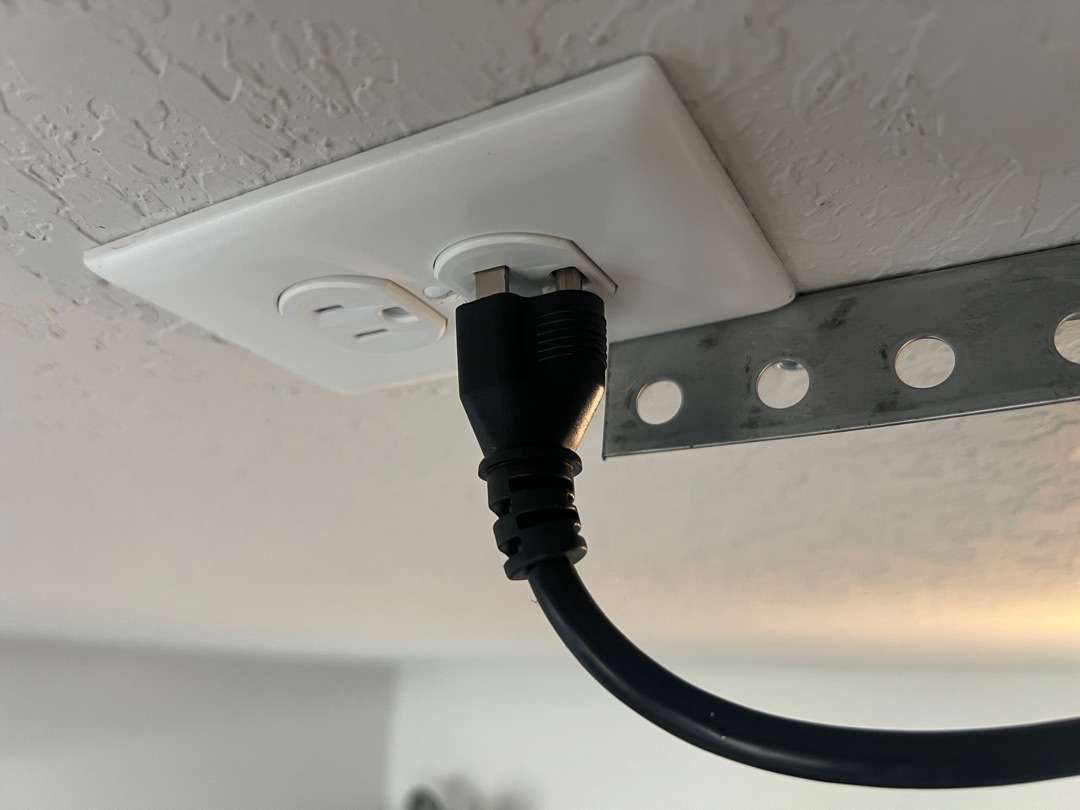
If your garage door opener does not have power, it could be several things. First, check to make sure the opener is plugged into the ceiling outlet, and it is fully seated in the socket. We have seen occasionally where the plug has slipped out enough to lose power to the opener.
Next, try testing to see if the ceiling outlet has power by plugging in something you know works for sure. If not, make sure a breaker has not tripped in the breaker panel.
The next step would be to check in the garage for a GFCI outlet to see if it needs to be reset. This is the most common reason why garage door openers don’t have power.
Last, if none of these tips resolves your issue, you may have a blown capacitor or a bad circuit board. At that point, you can try to diagnose it yourself or call a garage door company.
Conclusion
Residential garage door opener outlets and prewire need to be installed in the right place and done correctly to ensure a clean, reliable installation. Having this work completed after a home is built can be expensive and time-consuming.
This article should help to give you a more in-depth understanding of the outlet and prewire requirements, so you can pass them on to your contractor or use them for your next DIY installation.
